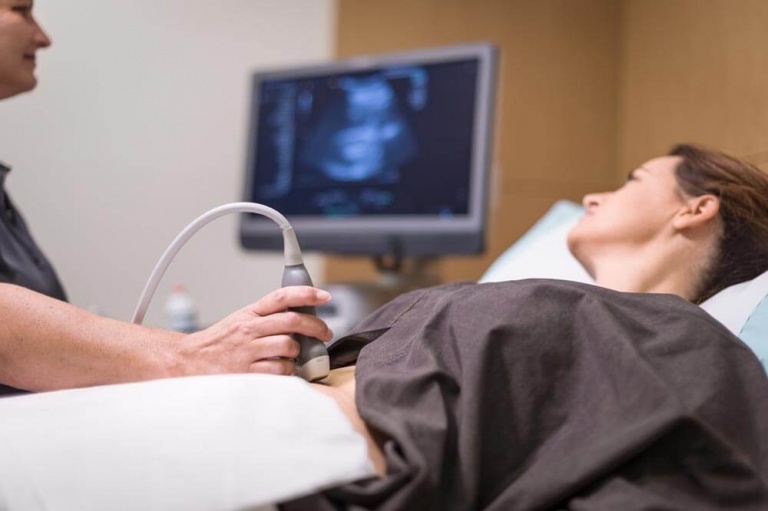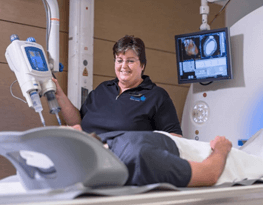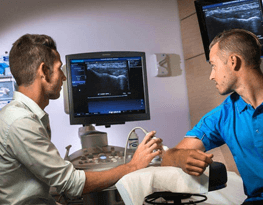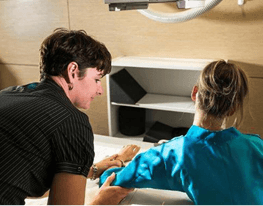What is a Hip Ultrasound?

A hip ultrasound is a procedure that uses ultrasound imaging primarily to evaluate the soft tissues, muscles, tendons, ligaments, joints and bone surrounding the hip. It is used to help investigate abnormalities including:
- Arthritis
- Fluid on the hip
- Muscle tears and soft-tissue inflammation
Paediatric Hip Ultrasound may be used in infants to check for developmental dysplasia of the hip (DDH).
Hip Ultrasound
What happens during a Hip Ultrasound?
A. Before your scan
What to bring
- Your request form
- Any relevant previous imaging
- Your Medicare card and any concession cards
Preparation – the day of your procedure
There is no specific preparation and you may eat and drink as desired before and after the procedure. You will be asked to fill out a questionnaire regarding your health status, medication, and any known allergies. You will be asked to change into an examination gown for your scan.
B. During your Hip Ultrasound
Procedure
You will be made comfortable on the examination table and asked to lie on your back or side. Gel will be applied to the area being imaged to help create a good contact between you and the ultrasound probe. The probe will be placed directly onto the gel and your skin for the duration of the examination.
Your ultrasound will be performed by a Radiologist (medical specialist) or a sonographer (a specially trained technologist). Because the examiner is interpreting moving images on a screen a high degree of concentration is required.
Ultrasound examinations are not painful and generally not invasive but may be uncomfortable particularly if you need to move a body part that causes you discomfort.
Most ultrasound examinations will be completed within 30 minutes. It is not unusual for the radiologist to come in and speak with you and view the images on the screen. At the end of the procedure the gel is simply wiped from your skin so that it does not mark your clothes.
Risks and side effects
Ultrasounds are a very low risk procedure and complications are rare however you should be informed of the possible risks and side effects.
Risks associated with this procedure include:
- If scanning is performed over an area of tenderness, you may feel pressure or minor pain from the transducer.
Any medical procedure can potentially be associated with unpredictable risks.
Who will perform my Hip Ultrasound?
Your ultrasound examination will be carried out by a sonographer (a technologist trained in ultrasound imaging)
Hip Ultrasound
What happens after a Hip Ultrasound?
How do I get my results?
After your appointment, the information from your scan is interpreted by Envision’s Radiologist before delivery of a report to your doctor.
Post-procedure
You should be able to go about your daily activities after your appointment.
Medical Imaging Practice Perth
Types of Imaging
At Envision, we offer the most sought-after types of imaging for diagnostics and treatments. Our Wembley headquarters is the largest single-site radiology practice in Perth







